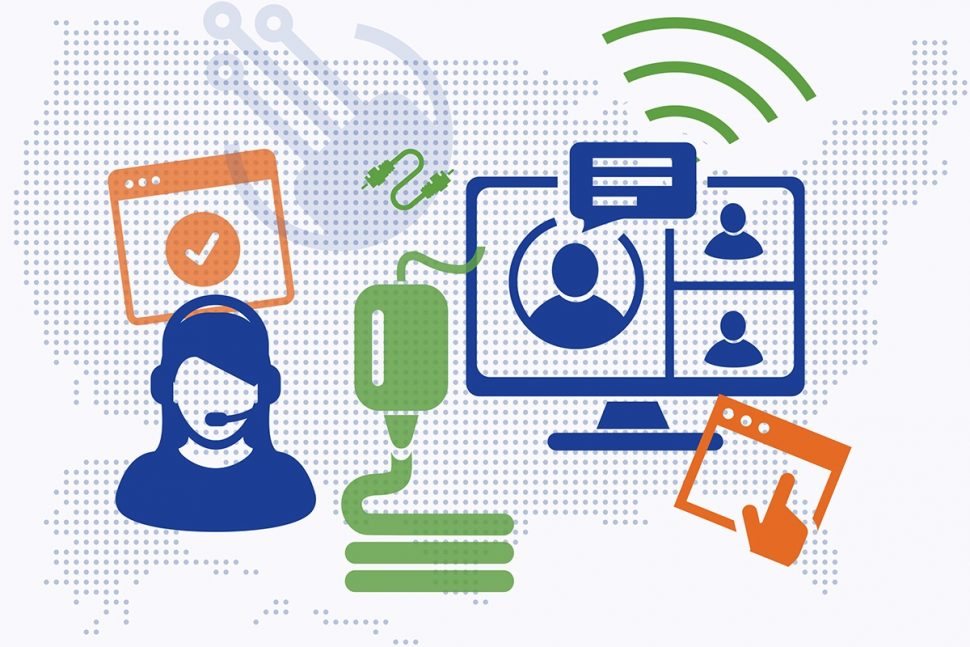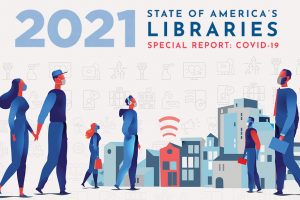
On September 1, the Public Library Association (PLA) issued its 2020 Public Library Technology Survey report, detailing how libraries are further extending their technology services and resources in the face of pandemic limitations.
PLA’s full statement about the report follows:
As the nation celebrates Library Card Sign-Up Month this September, a new report from the Public Library Association (PLA) details how libraries are further extending their technology services and resources in the face of pandemic limitations. The 2020 Public Library Technology Survey report provides the most current and complete picture of how libraries serve as digital equity hubs.
Survey data, captured for the first time, shows that more than half of public libraries report circulating technology (for example, hotspots, laptops, and tablets) for patron use offsite. A similar percentage provided streaming public programs, such as storytimes and author events, in the previous 12 months, as well as diverse digital content, resources, and training. With public Wi-Fi now ubiquitous, many libraries also offered 24/7 internet access by leaving on or extending their Wi-Fi signal so that visitors can log on to the web in and outside of buildings.
“Library workers make technology more accessible for every person of every age in our communities, including students, job seekers, and the millions of Americans who still lack broadband access and skills,” said PLA President Melanie Huggins. “The new survey report details how our nation’s public libraries serve as critical infrastructure for bridging digital divides, empowering lifelong learning, and advancing economic recovery.”
PLA, a division of the American Library Association, fielded the nationally representative survey in collaboration with the American Institutes for Research late last year. It examines library patron resources, technology infrastructure, digital literacy programming, technology staffing, and funding.
More than 63% of public libraries offer online job and employment resources. By deploying augmented reality for job training, videoconferencing resources, and in-person and virtual coworking spaces, libraries advance community economic recovery and empower users to find new work and careers as the labor market adjusts.
Ebooks and e-audiobooks dominate public library technology-enabled services. More than 93% of US public libraries offer digital collections in high demand. Library ebook provider OverDrive recently reported an unprecedented 33% increase in ebook checkouts in 2020.
Students and families who rely on their cellphones to access the internet look to libraries for support. In response, more than half of US libraries offer access to library materials, homework help, and other services through intuitive and innovative library mobile apps. Nearly two-thirds of libraries now offer wireless printing as well.
While libraries sustain and expand technology offerings, the survey also reveals areas of concern. Data shows gaps in available general technology resources and staffing among city, suburban, and town/rural public libraries. For example, 40.4% of town/rural libraries have upgraded their bandwidth, compared to 51.4% of city libraries. In addition, more than 65% of city libraries reported having full-time library IT staff, but only 32% of suburban and 11% of town/rural libraries report this is the case. Further, more than one-third cannot improve bandwidth because faster speeds are not available.
“Investing in affordable, high-speed internet for our communities and libraries is essential to building an inclusive digital future,” Huggins said. “Congress has recognized the indispensable role of libraries in recent pandemic relief and recovery legislation and must continue to do so as it debates how to rebuild our nation’s infrastructure.”
In addition to broadband access, libraries play an essential role in advancing digital literacy:
-
-
-
- More than 88% of all public libraries offer formal or informal digital literacy programming.
- More than one-third (36.7%) of public libraries have dedicated digital literacy and technology programs and training staff.
- More than one in five libraries provide classes or informal help related to coding, computer programming, robotics, and 3D printing.
-
-
While 3D printers (offered by 20% of libraries), virtual reality headsets (13%), and smart boards (7%) are the “new kids on the block,” libraries are often among the few public places maintaining ready access to the older technology (copy machines, printers, and fax machines) still needed by many people.
Read more about the 2020 Public Library Technology Survey findings.


